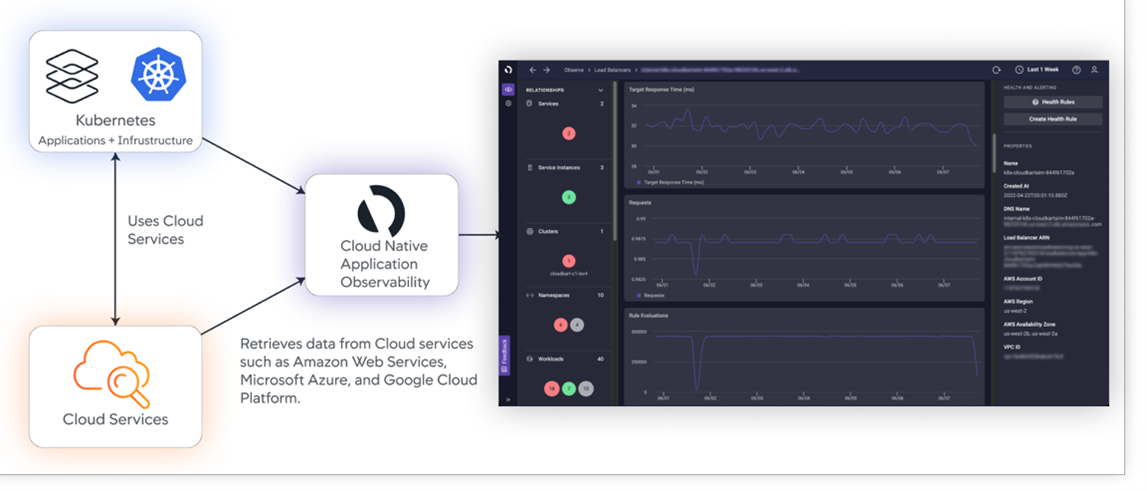Health Rules and Cisco Cloud Observability APIs
Applications are the face of an organization, and we are entering the new age of application observability.[1] Keeping applications running like a well-oiled machine is imperative if the business is to succeed. Considering the complexity of the application stack that is spread across a multi cloud ecosystem, organizations have no choice but to adopt full stack observability that gives them visibility and insights into every entity in their application stack.[2]
Organizations know the ins and outs of their own applications and how best to operate them in production. However, they will not have real-time observability across their entire technology stack unless they tightly integrate with their cloud providers. Data collected because of this integration can then be used to correlate and contextualize across the stack to achieve full stack observability. This is where Cisco Cloud Observability (CCO) comes in. [3]
Cloud Connections with Cisco Cloud Observability
Cloud connections to your account in AWS/Azure/GCP will allow this FSO solution to pull data for the cloud resources and cloud services that you leverage in your application stacks. We address cloud connection API’s in the blogs referenced in [4] [5].
 Fig 1. High-level overview of how Cisco Cloud Observability works.
Fig 1. High-level overview of how Cisco Cloud Observability works.
Monitoring Entity Health with Cisco Cloud Observability
Once cloud connections are provisioned to your cloud accounts, be it in AWS or Azure or GCP, data is collected from your cloud resources and services subscribed. To gain insights from this data, the next step is to provision health rules to monitor entity health and automated response actions for the proactive management of entities in your application stack.
For manual provisioning of health rules and actions with ClickOps, you would use the Cisco Cloud Observability portal.[6]
For programmatic provisioning of health rules and actions using API’s [7], you can explore this with:
- sample python code [8],
- sandbox [9] and
- learning lab [10].
As an example, the code and sandbox use the lowest entity in your application stack, namely compute. The same methodology can be used on any entity in the application stack for which data collection is enabled.
Further reading
[1] The Age of Application Observability
[2] Innovation in the Age of Application Observability
[3] About Cisco Cloud Observability
[4] Leverage Abstraction To Hide Complexity with Cisco Cloud Observability Cloud Connection API
[5] Automating Observability with Cisco Cloud Observability Cloud API’s
[6] Health Rules Configuration with ClickOps
[7] API Documentation
[8] DevNet Code Exchange
[9] Sandbox
[10] Learning Lab

CONNECT WITH US